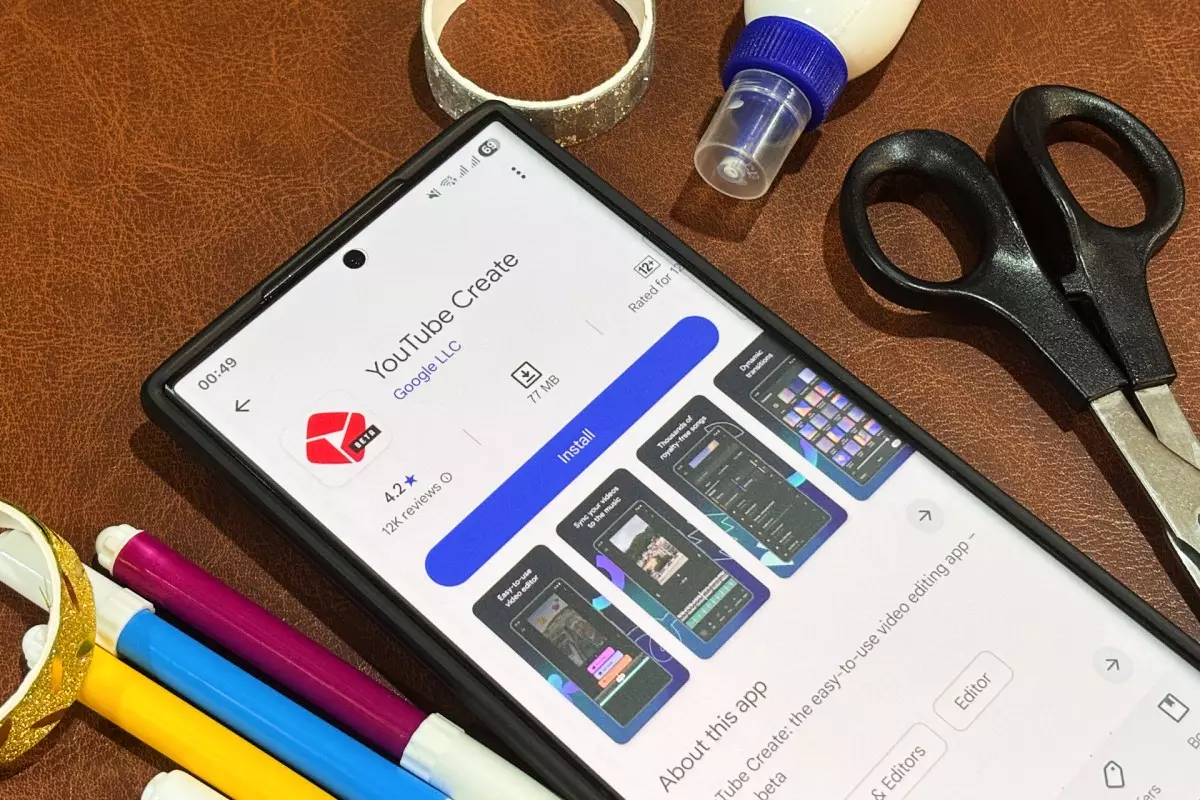For almost two years, YouTube Create has been an Android-exclusive contender in the crowded space of mobile video editing apps. Now, Google is gearing up to introduce it on iOS, signaling a significant pivot in its strategy to capture a broader creator audience. This move, evidenced by job postings recruiting iOS engineers in Bengaluru, shows Google’s serious intent to compete head-on with video editing giants like ByteDance’s CapCut and InShot on Apple’s platform. The decision to finally expand onto iOS isn’t simply about increasing app availability—it highlights a critical recognition by Google that cross-platform presence is essential for relevancy in today’s creator economy.
YouTube Create’s Struggles: A Clear Gap Between Ambition and Reality
Despite Google’s heavyweight behind it and the thoughtful development process involving consultations with thousands of content creators, YouTube Create has dramatically underperformed relative to its competitors. CapCut, with its TikTok integration and early mover advantage, dwarfs YouTube Create in downloads, user engagement, and retention. In Q2 alone, CapCut has been downloaded millions of times more than YouTube Create on Android, and its users spend significantly more time within the app. While YouTube Create boasts about a 28% year-over-year increase in active users—a positive sign—its absolute numbers remain marginal. For instance, its 90-day retention rate is a dismal 1%, well below CapCut’s 7%. These metrics suggest that while viewers may try YouTube Create, few are forming a deep or habitual attachment.
The Retention Dilemma: Why Users Don’t Stick Around
The low retention rate is perhaps the most telling weakness of YouTube Create. Video editing apps thrive not just by attracting users but by keeping them engaged over many editing sessions. CapCut’s users average 62 minutes per month with around 23 app launches, while YouTube Create users engage for only 38 minutes over 11 sessions monthly. This disparity signals a lack of “stickiness” that could stem from either a less intuitive user experience, insufficiently compelling features, or simply the overwhelming competition from better-established apps. Google’s creation, despite its innovations like stickers and seamless YouTube Shorts integration, still can’t match CapCut’s fluid blend with TikTok or InShot’s polished interface, reflecting a failure to fully capture creators’ evolving needs.
Shifting Geography: Diversifying Beyond India
Interestingly, YouTube Create’s user demographics reveal a gradual but important shift. Initially, India dominated its user base, constituting 67% of active users last year. Now, that concentration has dropped to just over half, showing promising international engagement especially in Southeast Asia and Europe. Markets like Indonesia (21%), Germany (5%), Brazil (4%), and the UK (3%) are gradually contributing to its growth. The app’s expansion into these regions, accompanied by impressive year-over-year growth figures in countries like Spain (119%) and South Korea (91%), demonstrates a potential for international traction. This shift might shape Google’s development and marketing priorities, especially as it prepares to launch the app on iOS, which has a stronger presence in many of these emerging markets.
The Path Forward: Can an iOS Launch Revitalize YouTube Create?
Google’s forthcoming iOS version of YouTube Create is undoubtedly a critical experiment. The iOS ecosystem, with its affluent and creator-savvy audience, presents a fertile ground for growth but also a tremendous challenge given the entrenched dominance of competitors like CapCut and Instagram’s editing tools. The iOS launch could serve as an inflection point—either catalyzing a new wave of growth or exposing YouTube Create’s weaknesses more starkly. If Google can leverage its massive YouTube user base and integrate creative tools deeply tied to the platform, it might foster a more loyal creator community. Still, retaining users long term and convincing them to switch from or adopt alongside existing editors requires innovation beyond what’s currently visible.
The Reality Check on Competition and Innovation
The harsh truth is that YouTube Create is a classic example of a tech giant entering a market too late and struggling with product-market fit. CapCut’s seamless TikTok integration and years of user trust have created an ecosystem nearly impossible to disrupt without a radically superior experience. Google’s app feels like it’s playing catch-up rather than leapfrogging competitors, leaving it vulnerable despite modest gains in user growth rates. This challenge isn’t simply about adding features. It’s about fostering a user experience that creatives find indispensable. Google’s strong suit is data and platform integration—if they truly capitalize on YouTube’s vast content ecosystem to create unique workflows, YouTube Create could evolve from a mere alternative editor to a creator’s essential toolkit.
My Take: YouTube Create Needs to Be More Than Just a Video Editor
From my perspective, Google’s biggest misstep so far is treating YouTube Create as just another video editing app instead of a uniquely positioned creator hub. To differentiate itself, the app must leverage its parent platform’s strengths—direct access to millions of YouTubers, deep analytics, and seamless content publishing options across formats. Simply mimicking features offered by CapCut or InShot won’t cut it. The iOS launch is a golden opportunity to rethink and revamp the app around creator workflows, community features, and smarter AI-driven editing assistance rather than merely expanding hardware reach. Without a bold reimagining, YouTube Create risks remaining a niche product overshadowed by giants who already own creator loyalty.

